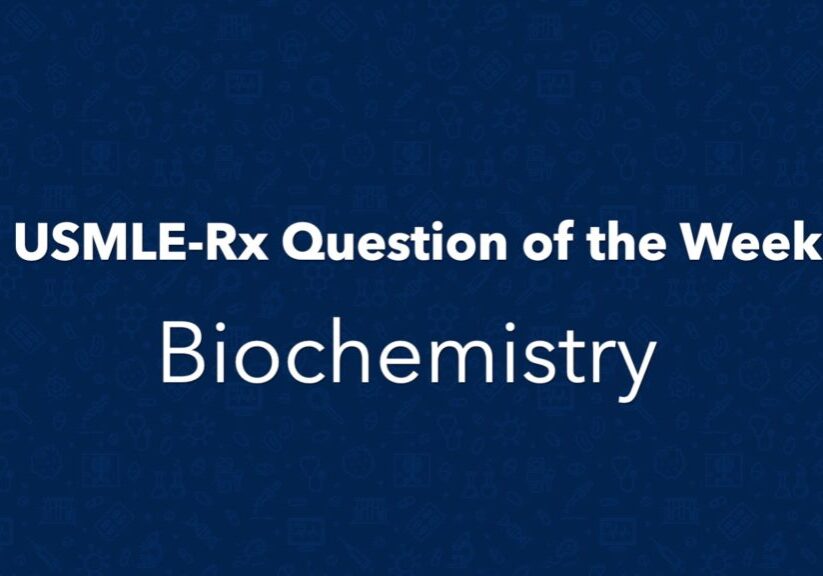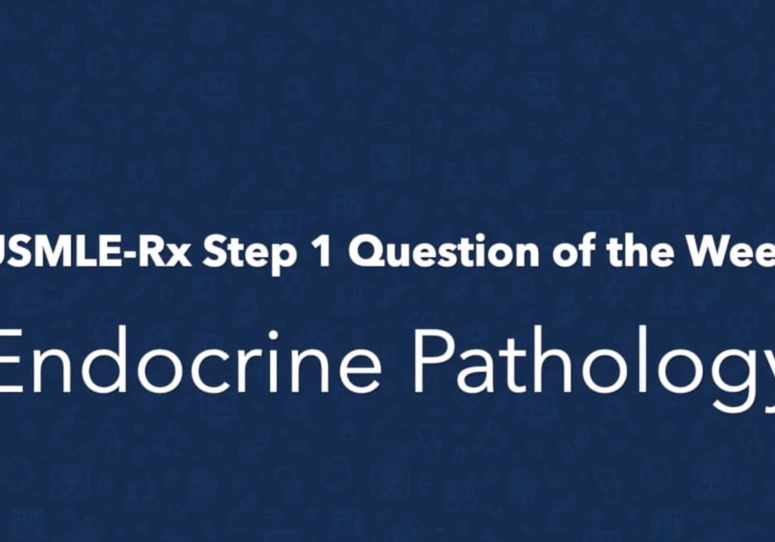Check out today’s Step 1 Qmax Question Challenge.
Know the answer? Post it below! Don’t forget to check back for an update with the correct answer and explanation (we’ll post it in the comments section below).
 A newborn boy presents to his pediatrician for a routine check-up. According to his mother, the infant has been feeding and growing well. On physical examination, vital signs are temperature 98.0°F (36.7°C), HR 100/min, RR 30/min, and BP 80/60 mm Hg. The physician notices several hyperpigmented macules on the child’s skin as shown. When the physician inquires, the mother affirms that the macules have been present since birth and notes that she is not worried as she has several similar spots and has never had a problem with them.
A newborn boy presents to his pediatrician for a routine check-up. According to his mother, the infant has been feeding and growing well. On physical examination, vital signs are temperature 98.0°F (36.7°C), HR 100/min, RR 30/min, and BP 80/60 mm Hg. The physician notices several hyperpigmented macules on the child’s skin as shown. When the physician inquires, the mother affirms that the macules have been present since birth and notes that she is not worried as she has several similar spots and has never had a problem with them.
What other physical exam finding is associated with this condition?
A. Bilateral vestibular schwannomas
B. Brushfield spots
C. Hypopigmentation of the hair
D. Iris hamartomas
E. Pheochromocytoma
———————–
Want to know the ‘bottom line?’ Purchase a USMLE-Rx Subscription and get many more features, more questions, and passages from First Aid, including images, references, and other facts relevant to this question.
This practice question is an actual question from the USMLE-Rx Step 1 test bank. For more USMLE Step 1 prep, subscribe to our Flash Facts and Step 1 Express video series. Score the best deal on all three products with USMLE-Rx 360 Step 1.




D , Lisch
A. NF type 2
I reviewed the material and realized I had not taken enough time to answer and chose the wrong answer. It is absolutely D. The cafe o lait spots are absolutely diagnostic, I had seen them before. So the correct answer is D.
NF-1 showing cafe-au-lait spots
NF-1 also shows
D) Lisch nodules
The correct answer is D. This patient’s café-au-lait spots and evidence of an autosomal dominant inheritance pattern (suggested by the mother’s café-au-lait spots) are most consistent with neurofibromatosis type 1 (NF-1), also known as von Recklinghausen disease. One of the most common autosomally dominant inherited disorders, it is caused by a mutation in the NF1 tumor suppressor gene on chromosome 17, which normally encodes the protein neurofibromin, a negative regulator of RAS. In addition to café-au-lait spots, NF-1 is characterised by neurofibromas and pigmented iris hamartomas, known as Lisch nodules. Skeletal abnormalities are common in NF-1 and include scoliosis, vertebral defects, and long bone dysplasia.
Bilateral vestibular schwannomas are found in NF-2, not NF-1. Make sure you can tell the two conditions apart. Hypopigmentation of the hair does not occur in NF-1 but can be occur in Chédiak-Higashi syndrome. Brushfield spots are present in Down syndrome, not NF-1. Pheochromocytoma can be seen in von Hippel-Lindau disease and multiple endocrine neoplasia type 2A and 2B, but very rarely in NF-1.
A is not correct. Bilateral vestibular schwannomas are associated with neurofibromatosis type 2 (NF-2), an inherited autosomal dominant disorder that usually manifests in patients around the age of 20 years but can also appear in childhood. It results from mutation of the NF2 gene on chromosome 22, which functions as a tumor suppressor gene. Although NF-2 can manifest with with cutaneous tumors, it does not manifest with café-au-lait spots, as in this scenario.
B is not correct. Brushfield spots are small white spots found in the periphery of the iris in patients with Down syndrome. Most cases of Down syndrome arise from trisomy 21. Other physical features of Down syndrome include epicanthic folds, brachycephaly, and hypotonia. These features are not present in this patient.
C is not correct. Hypopigmentation of the hair occurs in Chédiak-Higashi syndrome, a rare autosomal recessive disorder that is usually diagnosed in infancy and leads to inability to phagocytose bacteria. It is caused by mutation in the CHS1 gene on chromosome 1. This patient does not exhibit hypopigmentation of the hair and instead presents with hyperpigmented macules, which are not associated with this syndrome.
E is not correct. Pheochromocytoma is a catecholamine-secreting tumor of the chromaffin cells in the adrenal medulla. It can occur spontaneously or be inherited in an autosomal dominant fashion; rarely, the inherited form is associated with NF-1. Pheochromocytoma can manifest with tachycardia, sweating, and paroxysmal or chronic hypertension, none of which is seen in this patient. Additionally, pheochromocytomas usually manifest when patients are in their 30s.
Thank you for the excellent review, I needed it.
You should participate in a contest for among the best blogs on the web. I will advocate this website!